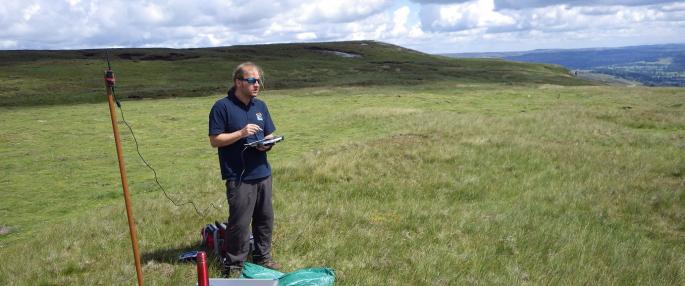Restoring peatland habitats across the Yorkshire Dales and North York Moors is tricky when working across such large areas; conservationists have been putting down their quadrats and are picking up something a bit more modern...
Unmanned aerial vehicles have been used extensively by the Yorkshire Peat Partnership to survey and identify habitats in need of restoration, and then monitor them as they progress back to their former glory - helping to lock carbon in the ground, keep our drinking waters clear and provide a wonderful home for upland wildlife.

Restoration Officer at Yorkshire Wildlife Trust Matt Cross, tells us more:
“A unmanned aerial vehicle (UAV) survey has been flown at Stean Moor and Middlesmoor in Nidderdale and at Thoralby Common and Stake Moss in Bishopdale. The UAV imagery provides us with stunning detail that is far more up to date than the images available to buy, and helps us to map areas of peatland erosion that we may be able to work on to help prevent further erosion. These surveys were undertaken specifically so our GIS & Remote Sensing Officer, Mark can produce a 3D model of the landscape that enables him to map the flow of water across the moor. I will then use that information to specify what peatland restoration work needs doing and where.”
Monitoring was also carried out on foot at Ingleborough where the team looked at the state of the grip dams and surveyed any revegetation. Grips were cut into the peat many years ago for drainage. Damming these grips is a practical way to help restore peatlands and prevent them from degrading further. Water moving through grips erodes the peat, releasing carbon into the atmosphere. The eroded peat also finds its way into water courses, turning it brown, affecting aquatic wildlife and costing water companies, whom have to filter it out for clear drinking water. The team found the grip dams at Ingleborough in good condition with pools formed by the small dams being colonised with Sphagnum moss and cotton grass.
Matt continued: “Most of our restoration work happens in the bleak mid-winter so it’s great to get back on-site to see how the peatlands are recovering and a very rewarding part of my job to see them doing so well.”
Find out more here or like the Yorkshire Peat Partnership's Facebook page.










